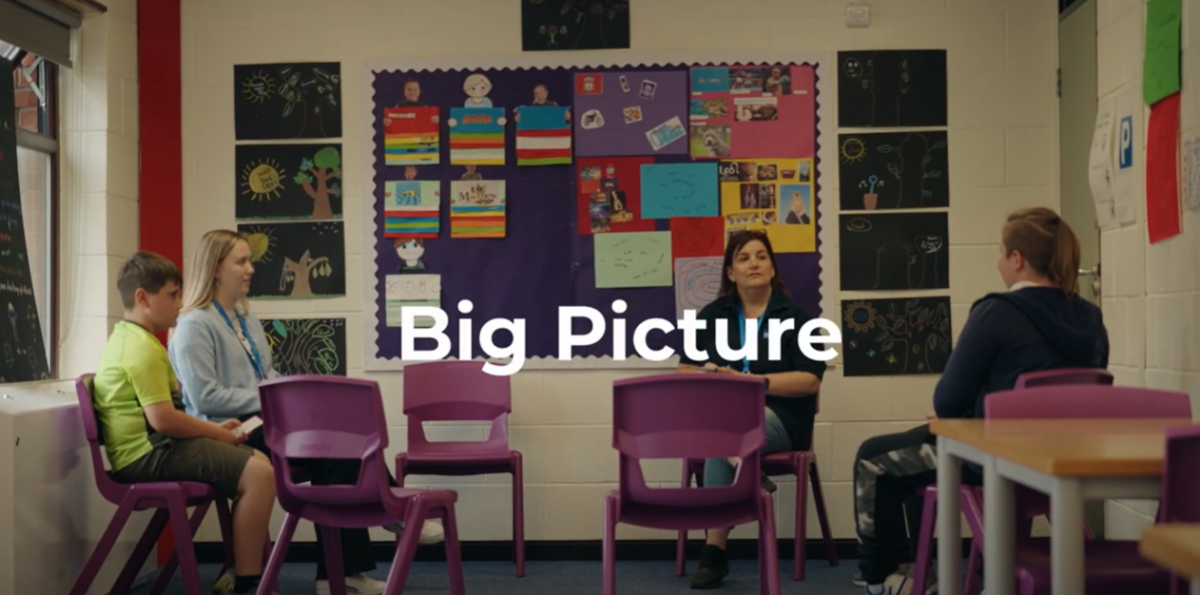Labour unveils plan to tackle regional teacher recruitment gaps as supply teacher spend jumps by half in a year

In the run up to the release of A level and GCSE results, Labour today unveiled more of its plans to target gaps in the teaching workforce and tackle growing regional attainment gaps, after new research from the party found a sharp rise in the amount that schools in England are spending on employing supply teachers.
As part of Labour’s plan to “smash the class ceiling” and break down barriers to opportunity for young people, Labour’s Shadow Education Secretary Bridget Phillipson said today that Labour’s pledge to recruit more than 6,500 new teachers and its reformed incentive payment scheme would focus on areas with acute shortages.
Labour’s recruitment plan would more than fill teacher vacancies and temporarily filled roles, giving stability for children worst affected by teacher vacancies.
Labour’s measures to simplify existing incentive payment schemes will ensure that existing levelling-up payment schemes do not conflict with other incentive payment schemes, and look across the board geographically to target incentives at areas that need them most.
The news comes as the party releases new research that amounts paid by schools on supply teachers has increased by£431 million in just a year due to ongoing teacher recruitment and retention problems.
Labour found that amounts that total spend by schools on supply teachers rose from£839 million to £1.2 billion in the last year, a rise of more than50 per cent.
Freedom of Information requests by the party showed that several local authorities had spent more than £5 million on supply teachers in the last year alone, including Conservative-run councils Essex Hampshire, West Sussex, Leicester and Hertfordshire, which spent £10 million in 2021/2022.
Further analysis of major multi-academy trust accounts found that the amount that major education trusts spent rose by 60 per cent – from just over £33 million in 2021, to £54 million in 2022.
In 2021, the largest multi-academy trusts in England spent £63,877 per school on supply teachers (on average). In 2022, the school workforce crisis forced those same trusts to spend £103,312 per school (on average) – a rise of more than 60 per cent.
The trusts operate 522 schools in England – a mixture of primary, secondary, and special schools, and sixth forms. Labour says, however, that the total spend by academies is likely to be far higher, given that the party’s analysis was limited to only major academy trusts.
The Government’s failure to address the schoolteacher workforce crisis has resulted in thousands of newly qualified teachers leaving the profession early, vacancies three times higher than they were decade ago and major industrial action across the country disrupting children’s learning.
With fears of growing attainment gaps, the ongoing recruitment crisis threatens to jeopardise the quality of children’s education.
These recruitment and retention challenges have significant impacts, with the number of A-level students receiving A/A* grades last year falling by a third more across the North East compared to the South East.Labour’s plan will aim to drive high and rising standards in areas where shortages are harming opportunities for children to get on, particularly in the north of England and the midlands.
Commenting on the findings, Bridget Phillipson MP, Labour’s Shadow Education Secretary said:
“Supply teachers make a valuable contribution to our classrooms, but this rise in spending by schools suggest there are profound problems in wider teacher recruitment and retention.
“The Conservatives have created the perfect storm in our teaching workforce, with teachers old and new leaving and with too few replacing them.
“Our children will reap the whirlwind of lower school standards and worse life chances in years to come unless the Conservatives get to grips with the dangerous exodus of teachers that they created.
“Labour’s plan to recruit an additional 6,500 teachers and reform incentive schemes will tackle teaching shortages, and drive high and rising standards in our schools so we can break down barriers to opportunity for our young people.
Sector Response
Kevin Courtney, Joint General Secretary of the National Education Union, said:
“It is good to see Labour acknowledging the scale of crisis in our schools. This crisis of recruitment and retention has got worse year by year since the Conservatives entered Government in 2010. Labour’s announcement is welcome; but such is the scale of Conservative neglect, there will need to be much more movement to change the negative direction. We look forward to further announcements from Labour.”
Percentage of hours taught by non-expert teacher (no relevant post A Level qualification), by subject, secondary schools in England, 2017- 2023
| Subject | 2017/18 | 2018/19 | 2019/20 | 2020/21 | 2021/22 | 2022/23 | 5 year comparison | 1 yr comparison |
| Engineering | 75.4 | 78.3 | 79.7 | x | 80.3 | 79.9 | 4.5 | -0.4 |
| Citizenship | 78 | 77.4 | 78.1 | x | 79.9 | 78.9 | 0.9 | -1 |
| Media Studies | 60.9 | 61 | 60.3 | x | 58.2 | 59.3 | -1.6 | 1.1 |
| Computing | 54.4 | 52.7 | 49.6 | x | 46.9 | 45.9 | -8.5 | -1 |
| Other Modern Languages | 43.5 | 42.3 | 43.2 | x | 41.8 | 42.6 | -0.9 | 0.8 |
| Spanish | 37.8 | 37.9 | 37 | x | 36.8 | 38.1 | 0.3 | 1.3 |
| ICT | 31.5 | 30.4 | 31.7 | x | 31.7 | 31.7 | 0.2 | 0 |
| Design and Technology – Graphics | 15 | 17.2 | 24.4 | x | 27 | 29.2 | 14.2 | 2.2 |
| Physics | 24.9 | 24.7 | 26.7 | x | 27.6 | 27.5 | 2.6 | -0.1 |
| Design and Technology – Food Technology | 26.2 | 27.2 | 23.1 | x | 24.9 | 27 | 0.8 | 2.1 |
| Religious Education | 24.1 | 24.2 | 25.2 | x | 24.6 | 25.8 | 1.7 | 1.2 |
| Design and Technology – Textiles | 18.2 | 19.7 | 25.3 | x | 23.6 | 25.7 | 7.5 | 2.1 |
| Design and Technology – Electronics/Systems and Control | 15.9 | 17.1 | 13 | x | 19.5 | 23.1 | 7.2 | 3.6 |
| All design and technology | 16.5 | 17.4 | 17.5 | x | 19.3 | 21.3 | 4.8 | 2 |
| Design and Technology – Resistant Materials | 12.8 | 14 | 15.1 | x | 16.1 | 21 | 8.2 | 4.9 |
| French | 16.2 | 17.4 | 16.7 | x | 18.8 | 21 | 4.8 | 2.2 |
| German | 19.2 | 19.9 | 19.2 | x | 19.4 | 20.5 | 1.3 | 1.1 |
| Drama | 19.7 | 20.3 | 20.4 | x | 19.1 | 18.3 | -1.4 | -0.8 |
| Business / Economics | 15.4 | 15.9 | 17.5 | x | 17.8 | 18.2 | 2.8 | 0.4 |
| Chemistry | 18.1 | 18.4 | 17.3 | x | 16.6 | 16.8 | -1.3 | 0.2 |
| Other/Combined Technology | 13.5 | 13.8 | 13.1 | x | 13.4 | 15.3 | 1.8 | 1.9 |
| Other Sciences | 14.3 | 11.7 | 8.4 | x | 12.6 | 13.9 | -0.4 | 1.3 |
| Mathematics | 13.1 | 12.8 | 12.9 | x | 11.6 | 12.8 | -0.3 | 1.2 |
| Geography | 14.3 | 13.1 | 11.4 | x | 9.9 | 11.4 | -2.9 | 1.5 |
| English | 10.7 | 10.6 | 8.9 | x | 7.4 | 7.9 | -2.8 | 0.5 |
| Biology | 6.5 | 7 | 6.9 | x | 6.5 | 6.7 | 0.2 | 0.2 |
| History | 9.6 | 9.1 | 8.1 | x | 7.1 | 6.7 | -2.9 | -0.4 |
| Music | 3.6 | 3.6 | 3.8 | x | 4.4 | 5.3 | 1.7 | 0.9 |
| Art and design | 4 | 3.7 | 3.6 | x | 3.5 | 3.7 | -0.3 | 0.2 |
| Physical education | 4.5 | 4.1 | 2.7 | x | 2.9 | 3.1 | -1.4 | 0.2 |
Recruitment to teacher training is down by a third so far this year (as of May)
| Year | Total recruited |
| 2022 | 1519 |
| 2023 | 1102 |
| Gap | 417 |
| % Gap | 27% |
Sources – 2022: https://www.gov.uk/government/publications/monthly-statistics-on-initial-teacher-training-itt-recruitment
44,000 teachers left the state-funded sector in 2021/22, up by 7,800 since last year. This represents 1 in 10 (9.7%) of all qualified teachers; the highest rate since 2017/18. The majority (91%) left due to leaving the state-funded sector in England, for example due to a change of career or joining other UK education sectors.
Source: https://explore-education-statistics.service.gov.uk/find-statistics/school-workforce-in-england











Responses